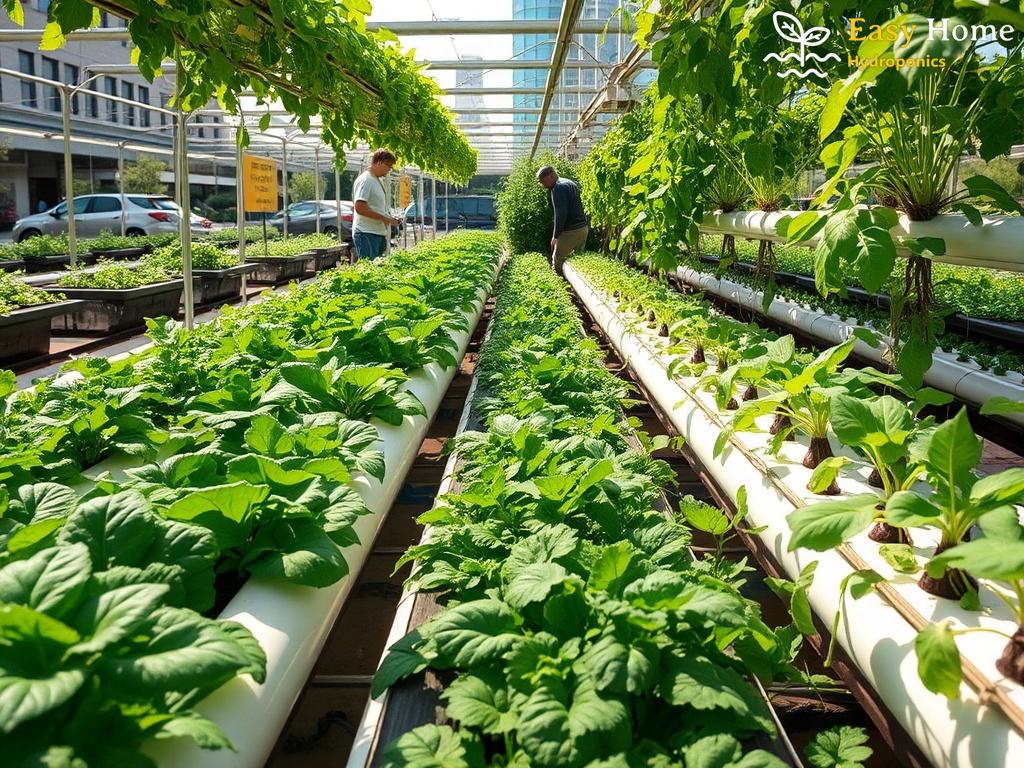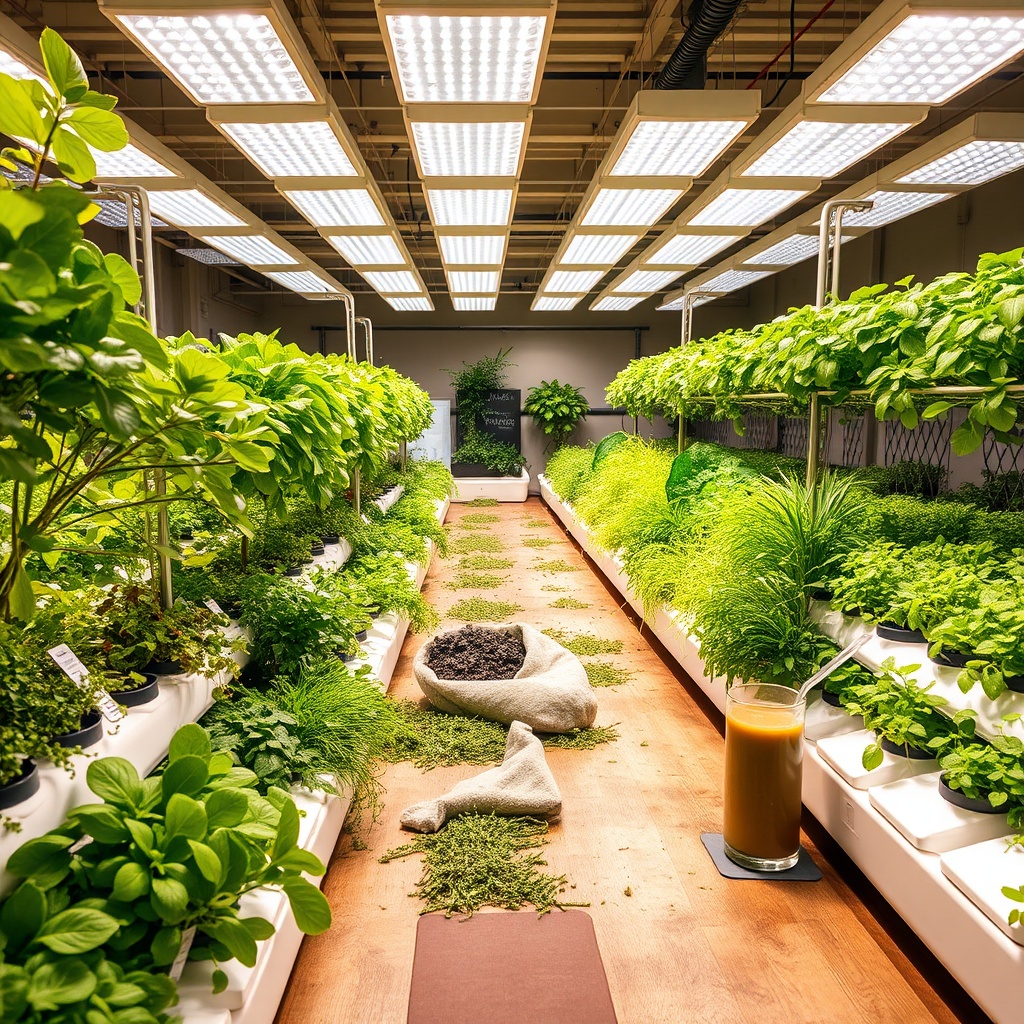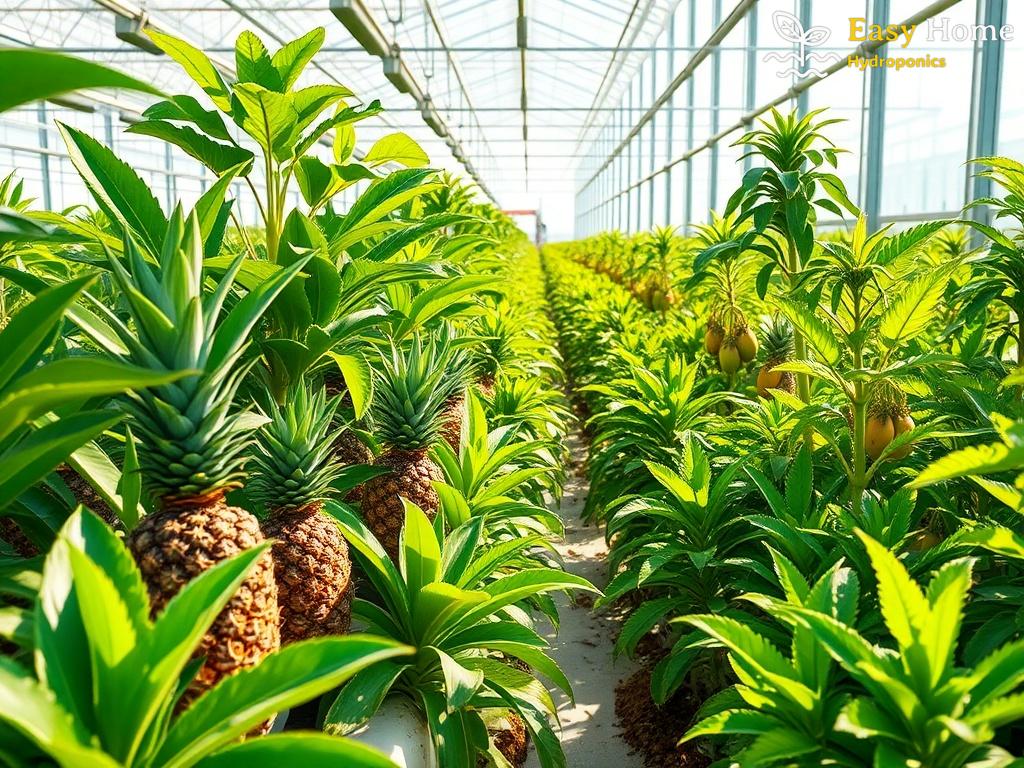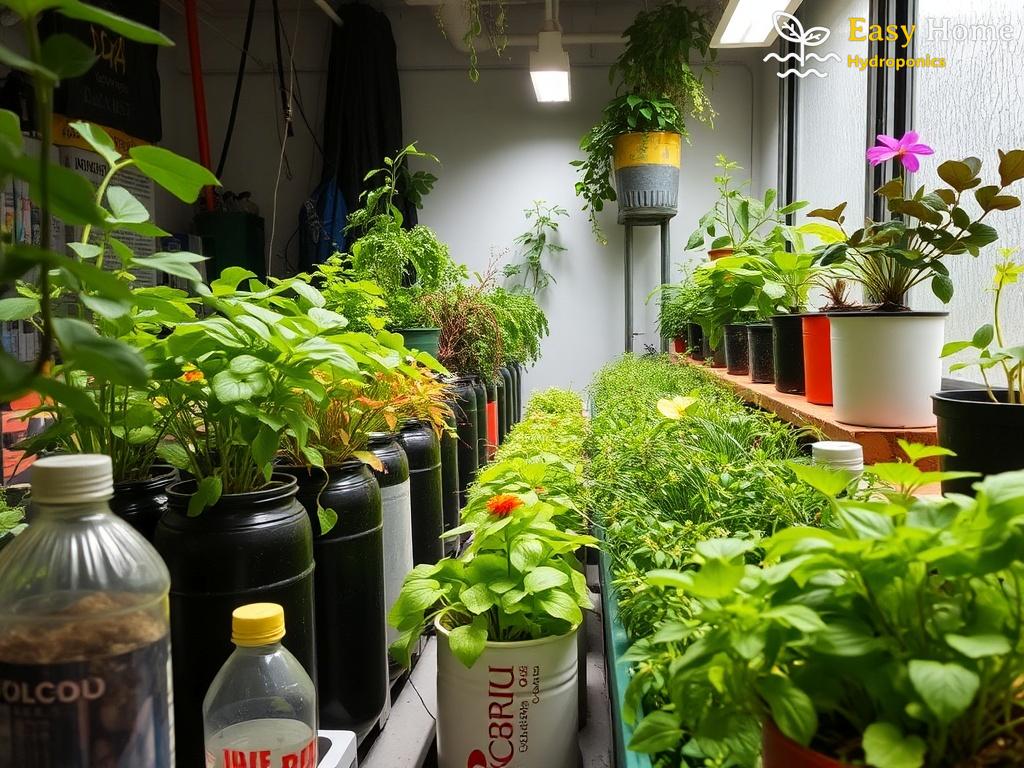Locavore Trends: Fueling Hydroponic Innovation
The locavore movement has taken root in communities across the globe, advocating for a lifestyle that emphasizes the consumption of locally grown food. This trend is not just a fleeting fad; it’s a burgeoning cultural shift that encourages sustainable practices and has significant implications for various markets, particularly hydroponics. By connecting consumers directly with their food sources, locavores are championing innovative agricultural practices that not only sustain local economies but also inspire a new wave of technological advancement in food production.
Hydroponics offers a solution to the locavore’s quest for fresh, locally sourced produce. This method of growing plants without soil allows for cultivation in urban environments, drastically reducing transportation emissions and delivery times. As locavores demand fresher options, the hydroponic market is responding with innovative systems that cater to both home gardeners and commercial ventures. The intersection of these two movements reveals a promising future for food sustainability.
As locavore trends continue to influence consumer behavior, hydroponic systems are evolving to meet the growing demand for local produce. Here are some noteworthy innovations shaping the hydroponic landscape:
- Modular Systems: Compact and scalable designs make it easier for individuals and small businesses to grow their own food.
- Smart Technology: Integration of IoT devices for monitoring and optimizing growth conditions has become increasingly popular.
- Community Gardens: Many urban areas are adopting hydroponic community gardens, fostering collaboration and sharing among locavores.
- Sustainable Practices: Organic nutrient solutions and recycled materials are being utilized to appeal to eco-conscious consumers.
The synergy between locavore movements and hydroponic innovation reflects a broader trend toward sustainable practices in food production. As consumers become more aware of their food choices, the hydroponic market is poised for expansive growth, driven by the desire for locally sourced and environmentally friendly options.
Sustainable Eating: Hydroponics Meets Local Farming
As the world shifts towards sustainable eating, the intersection of hydroponics and local farming presents an exciting opportunity for consumers who are eager to make environmentally conscious choices. This synergy is not merely a trend; it reflects a fundamental change in how we approach food production and consumption. The locavore movement is driving consumers to seek fresh, locally sourced produce, and hydroponics is uniquely positioned to meet this demand while promoting sustainability.
In urban areas where space is limited, traditional farming practices may struggle to thrive. Hydroponics, by contrast, enables the cultivation of crops in confined spaces, making it an ideal partner for local farming initiatives. By utilizing vertical farming techniques and innovative growing systems, urban dwellers can produce their own food, effectively reducing their carbon footprint and enhancing food security. This holistic approach to local food production is not only beneficial for the environment but also for community well-being.
Hydroponics and local agriculture complement each other in numerous ways. While traditional farming relies heavily on land and weather conditions, hydroponics offers a controlled environment free from many of these constraints. This allows farmers to cultivate fresh produce year-round, which is increasingly important as climate change disrupts traditional growing seasons. Moreover, the ability to grow food in urban settings means that produce can be harvested at peak freshness, maximizing flavor and nutritional value.
Furthermore, hydroponics can significantly reduce the amount of water required for crop production. Traditional farming can consume vast quantities of water, often leading to unsustainable practices. In contrast, hydroponic systems use up to 90% less water, making them a more sustainable choice for future food production. As consumers become more aware of water scarcity issues, the appeal of hydroponic solutions only grows stronger.
The rise of hydroponic farms within local communities is reshaping the way people think about food. Community hydroponic gardens serve as educational platforms where individuals can learn about sustainable practices and the importance of local sourcing. These initiatives foster a sense of community and collaboration, enabling people to share resources and knowledge while cultivating their own food. Such community-driven efforts not only promote better eating habits but also bolster local economies by keeping food production within the region.
As the locavore movement continues to influence consumer behavior, the potential for hydroponics to transform local farming practices is immense. The combination of cutting-edge technology, environmental consciousness, and community empowerment creates a dynamic ecosystem that encourages sustainable eating. By embracing these innovations, we can pave the way for a future where food is not only fresh and accessible but also produced in a manner that respects our planet.
Urban Gardens: The Rise of Hydroponic Locavores

The concept of urban gardens is rapidly gaining traction, driven by the locavore movement that seeks to connect communities with their food sources. This trend is not merely about growing food; it embodies a lifestyle transformation where individuals prioritize sustainability, freshness, and locality. The integration of hydroponic systems into urban gardens is creating a vibrant and innovative agricultural landscape, where city dwellers can cultivate their own produce right from their balconies or rooftops.
Hydroponics: The Urban Growth Catalyst Hydroponics presents a revolutionary solution to urban gardening challenges. With limited space and traditional farming constraints, urban dwellers are turning to hydroponic systems to maximize their growing potential. These systems allow for the cultivation of a variety of crops without the need for soil, making them perfect for city environments. The ability to control growing conditions means that urban hydroponic gardens can produce healthy, fresh vegetables and herbs all year round. This not only reduces reliance on store-bought produce but also minimizes the carbon footprint associated with transportation.
Community Engagement and Education The rise of hydroponic locavores is more than just a personal endeavor; it’s a community-centric movement. Urban hydroponic gardens often serve as communal spaces, where individuals come together to learn, share, and grow. Workshops on hydroponic techniques, sustainable practices, and the importance of local sourcing are becoming commonplace. This educational aspect fosters a sense of belonging and encourages collaboration among participants, creating a network of informed consumers who are passionate about sustainable eating. As communities engage in these initiatives, they are not only improving their eating habits but also strengthening local economies by keeping food production within the neighborhood.
A Bright Future for Urban Hydroponics As the locavore movement continues to thrive, the future of urban hydroponics looks promising. With innovations emerging in hydroponic technology, such as automated systems and nutrient delivery solutions, urban gardeners can achieve greater yields with less effort. The increasing prevalence of urban hydroponic gardens signals a shift in food production paradigms, where the focus is not just on efficiency but also on sustainability and community involvement. By embracing this trend, cities can pave the way for a greener, healthier future where food is not only fresh and accessible but also nurtured with care and respect for the planet.
Consumer Behavior: How Locavores Shape Hydroponic Demand
The surge in locavore movements is not just transforming our plates; it’s reshaping entire industries, particularly the hydroponic market. As consumers become more conscious about where their food comes from and how it’s produced, their preferences are driving significant changes in agricultural practices. This shift in consumer behavior highlights the symbiotic relationship between locavores and hydroponics, where the demand for locally sourced, fresh produce is paving the way for innovative farming solutions.
Understanding the Locavore Influence
At the heart of the locavore movement lies a deep desire for transparency and sustainability. Consumers are increasingly seeking out food sources that align with their values, favoring local produce over mass-produced alternatives. This mindset creates a fertile ground for hydroponic systems, which excel in producing fresh, nutritious crops in urban settings. The ability to grow food closer to consumers not only satisfies their craving for freshness but also reduces the carbon footprint associated with transportation.
Hydroponics as a Response to Evolving Preferences
As locavores advocate for healthier eating habits, hydroponic methods are quickly adapting to meet these emerging demands. The integration of advanced technologies, such as automated nutrient delivery and climate control systems, allows hydroponic farms to produce high-quality crops year-round. This responsiveness to consumer preferences is essential, as it not only enhances the appeal of hydroponics but also fosters a loyal customer base. What sets hydroponics apart is its ability to provide a consistent supply of fresh produce that meets the locavore ethos of sustainability and locality.
| Consumer Preferences | Hydroponic Solutions |
|---|---|
| Freshness | Year-round production ensures peak freshness of crops. |
| Sustainability | Reduced resource usage, including water and land. |
| Transparency | Local production allows consumers to know their sources. |
Building Community Through Hydroponic Innovation
The locavore movement is not solely about individual choices; it emphasizes community engagement and collaboration. Hydroponic gardens in urban areas are becoming communal spaces where individuals come together to learn and grow. This collective effort fosters a sense of belonging and shared responsibility, further solidifying the bond between consumers and local food systems. As more people embrace the locavore lifestyle, they are not only influencing the hydroponic market but also creating a vibrant community that champions sustainable practices. The impact of this consumer behavior is profound, as it drives innovation and encourages new players to enter the hydroponics sector, ultimately enhancing the overall market growth.
Economic Impact: Hydroponics in the Locavore Economy
The fusion of locavore movements and hydroponic farming is not merely a trend; it heralds a transformative shift in agricultural economics. As communities embrace local sourcing, the economic implications are profound. Hydroponics, with its ability to produce food in urban environments, is stepping into the limelight as a viable solution to the demands of today’s conscious consumers. This evolution presents a unique opportunity for local economies, fostering job creation and stimulating growth in sectors tied closely to sustainable agriculture.
Locavore Spending Patterns play a pivotal role in this dynamic. Consumers who identify as locavores are willing to invest in fresh, locally grown products, often paying a premium for quality and sustainability. This shift in purchasing behavior has prompted hydroponic farms to adapt their offerings, ensuring that they meet the expectations of an increasingly discerning clientele. The result is a flourishing market where hydroponic produce not only competes with traditional agriculture but often surpasses it in value, thanks to the enhanced freshness and the reduced environmental impact associated with local production.
Furthermore, the reduced logistical costs associated with hydroponic farming contribute significantly to the locavore economy. Since hydroponics facilitates food production close to urban centers, transportation expenses diminish dramatically. This reduction is not only beneficial for farmers, who can allocate resources more effectively, but it also translates to lower prices for consumers, making locally sourced produce more accessible. As hydroponic farms proliferate in urban settings, they help create a self-sustaining ecosystem where local economies thrive and food deserts are alleviated.
Moreover, the integration of technology in hydroponic systems is paving the way for economic growth. Smart farming techniques, including data analytics and automation, allow hydroponic producers to optimize their operations and increase productivity. As these innovations spread, they stimulate job creation in tech-related sectors, further enriching the locavore economy. The synergy between technology and sustainable practices is a catalyst for not just agricultural growth, but also for a broader economic revival in communities that embrace local food movements.




